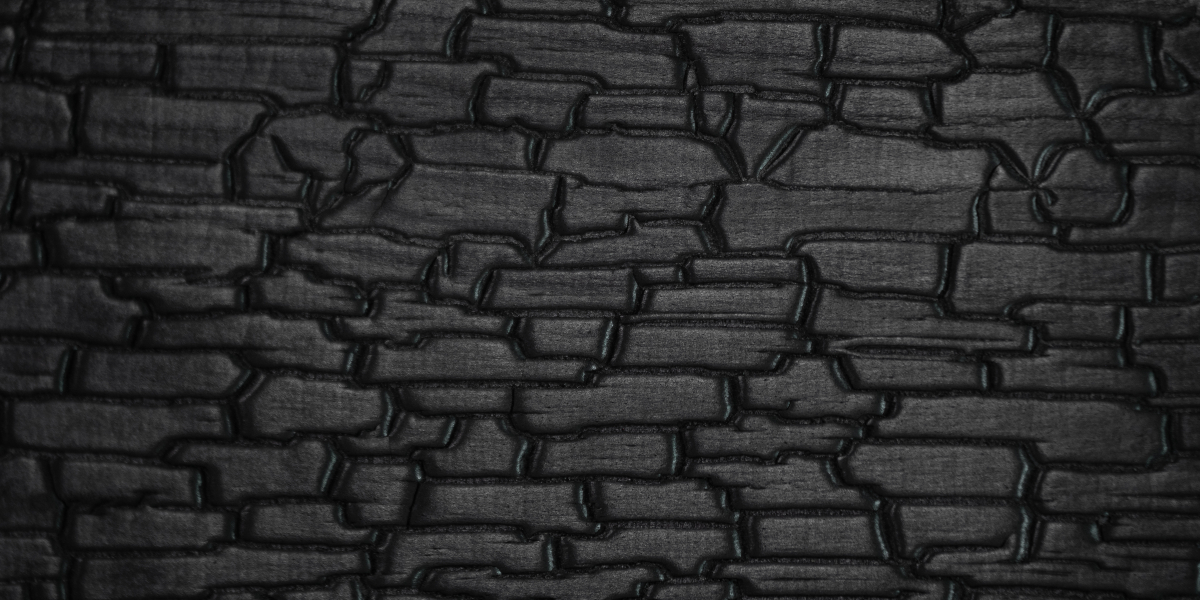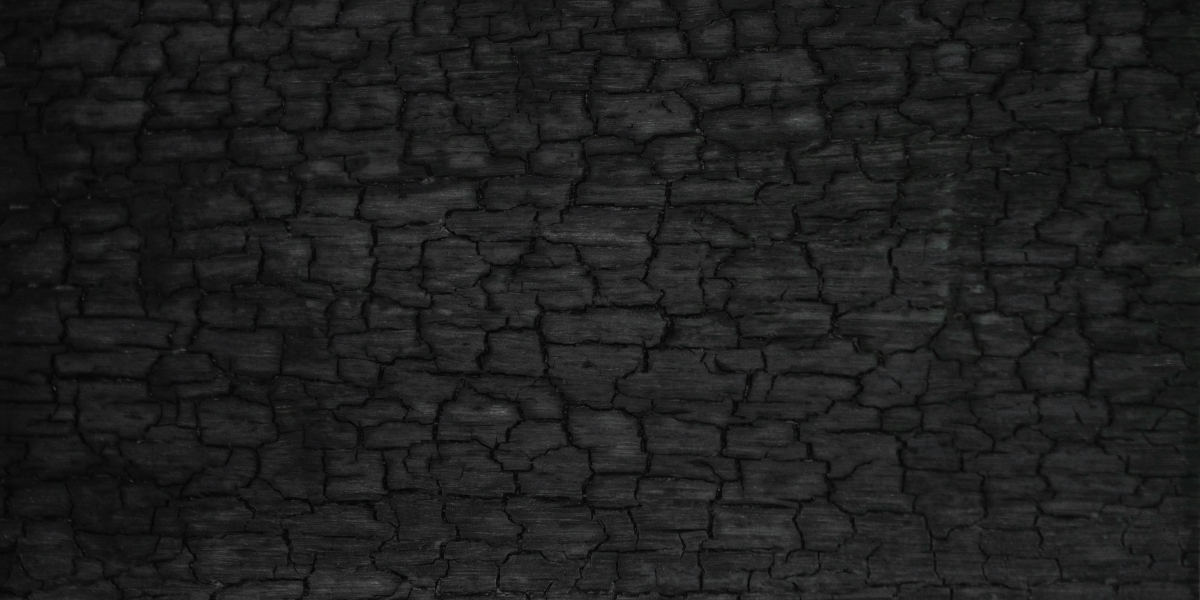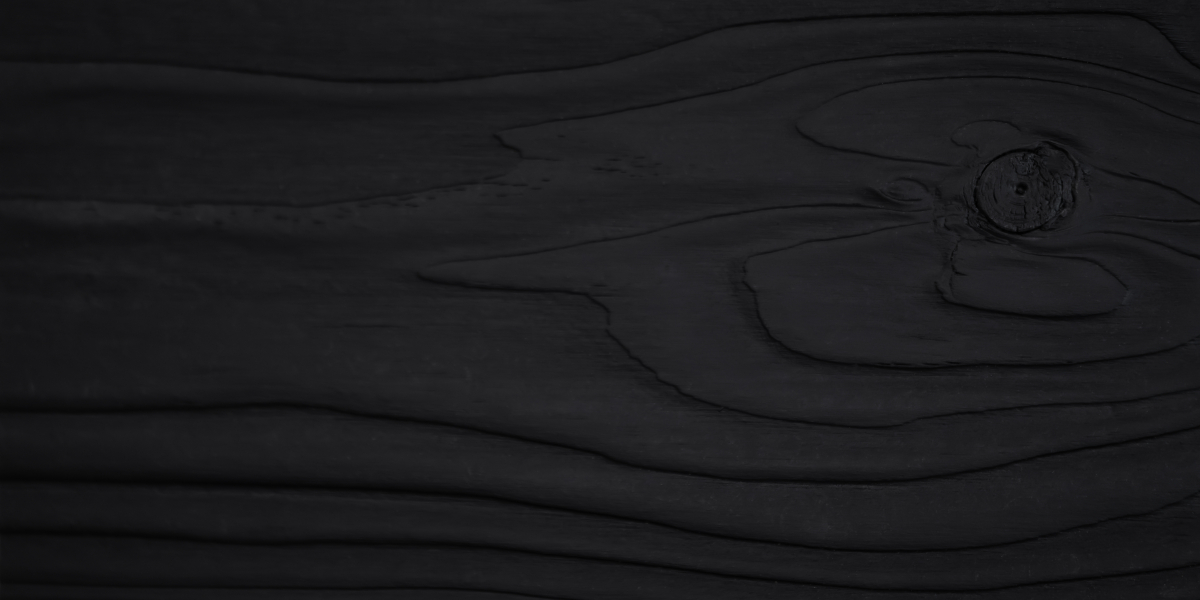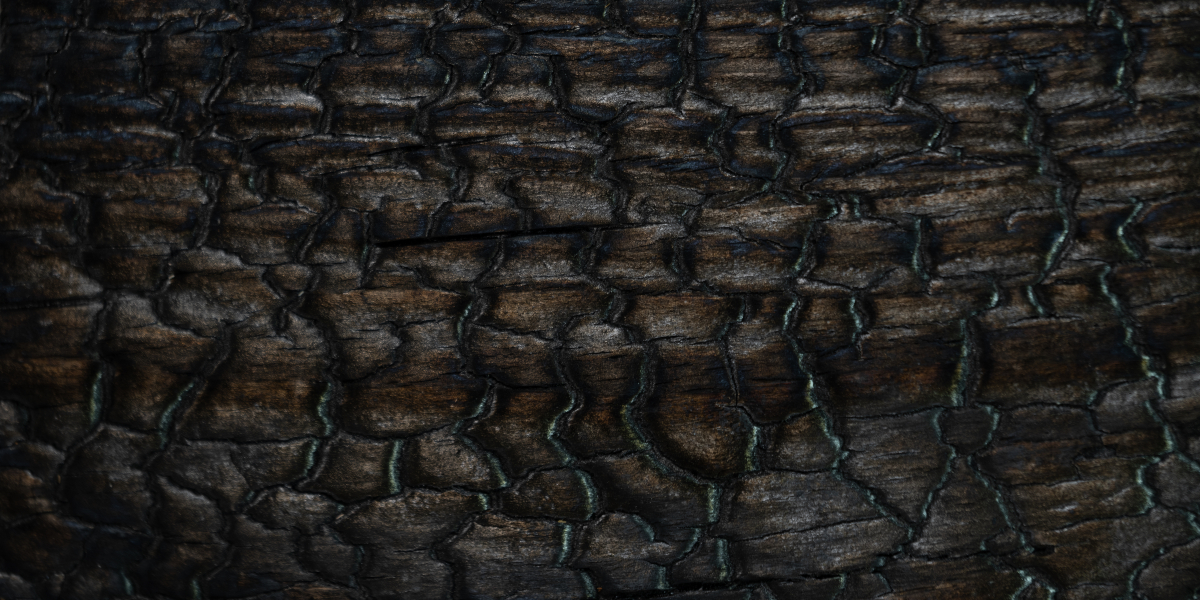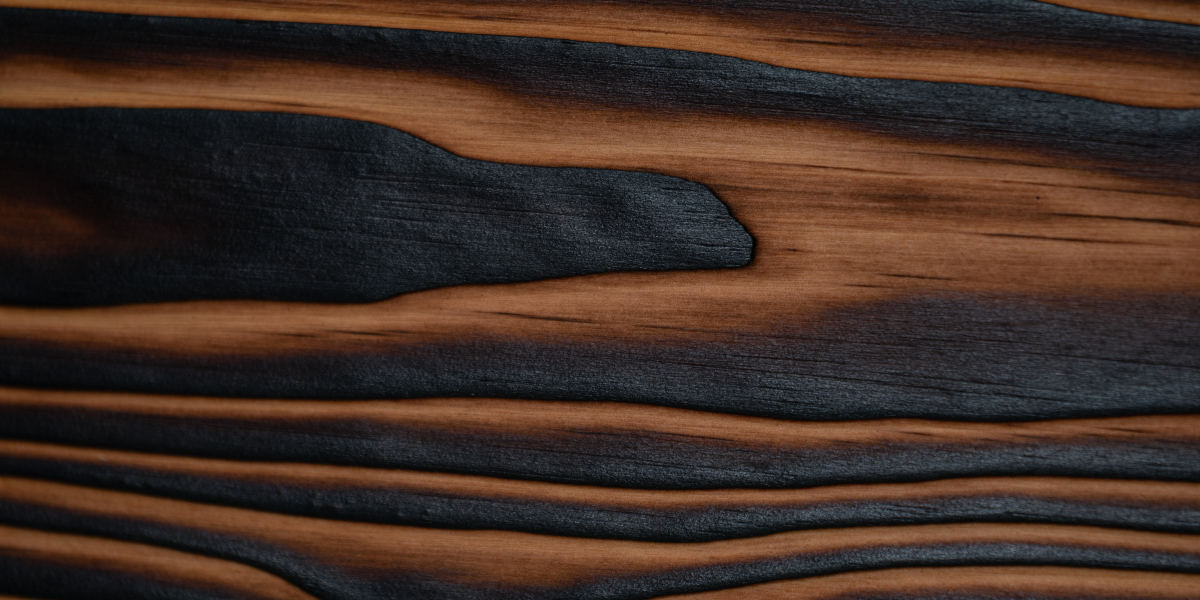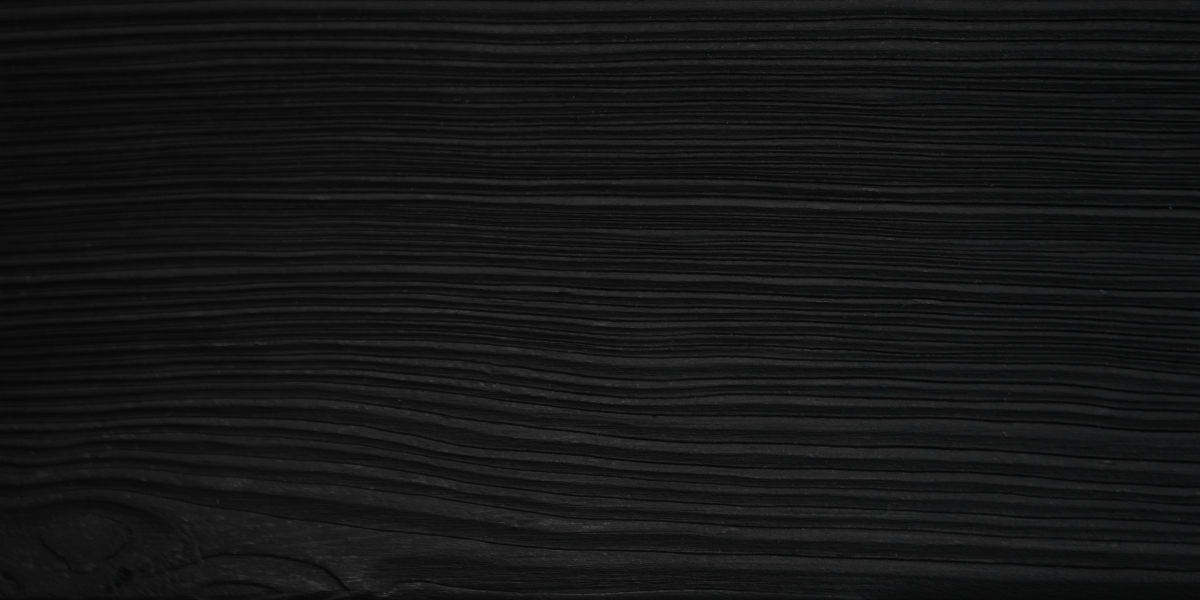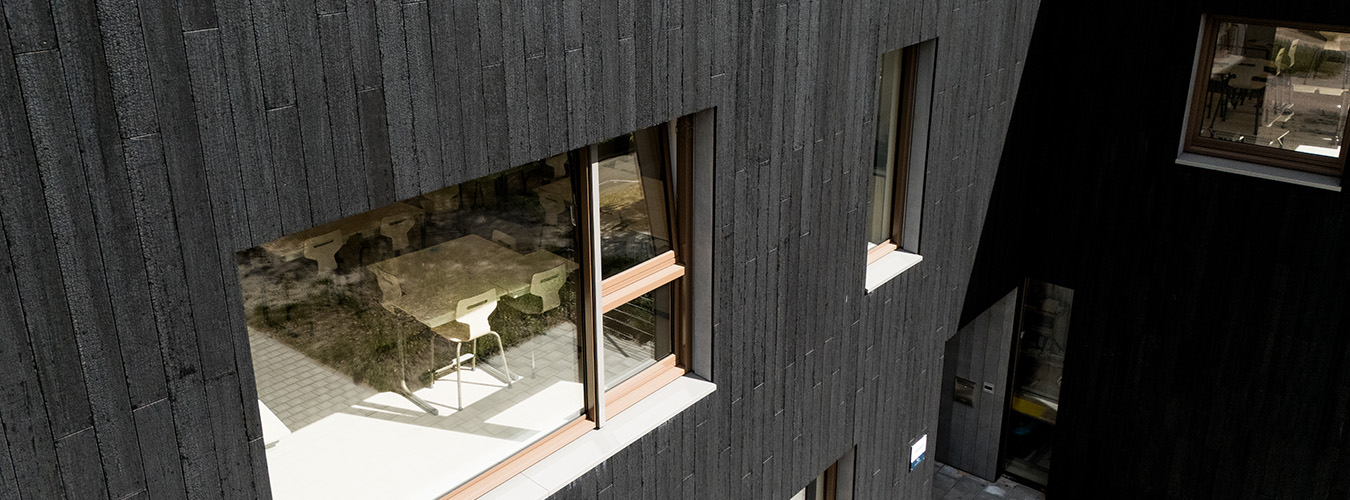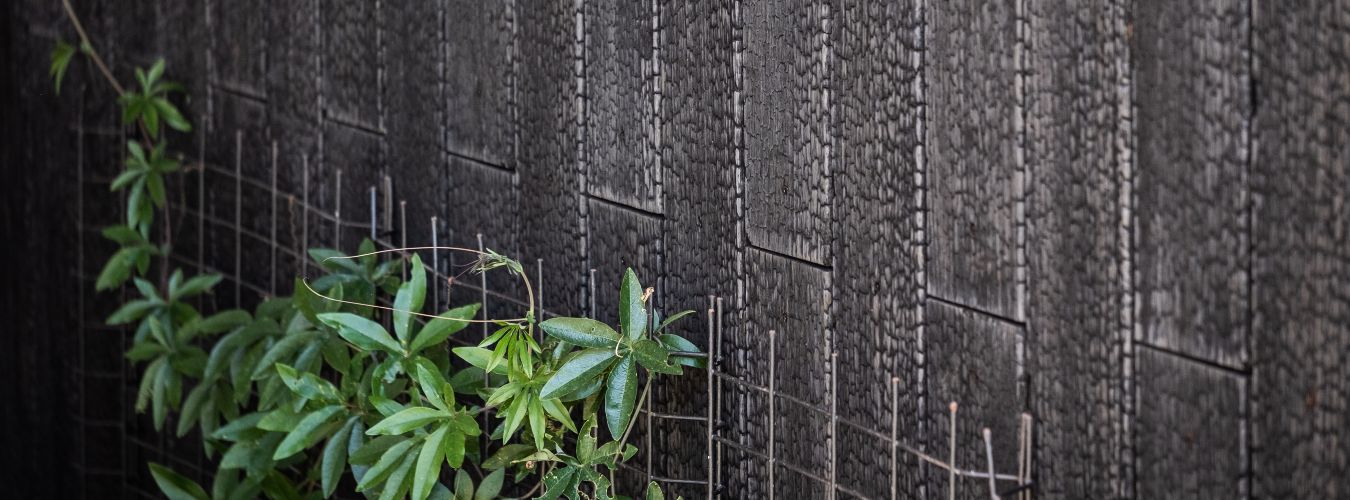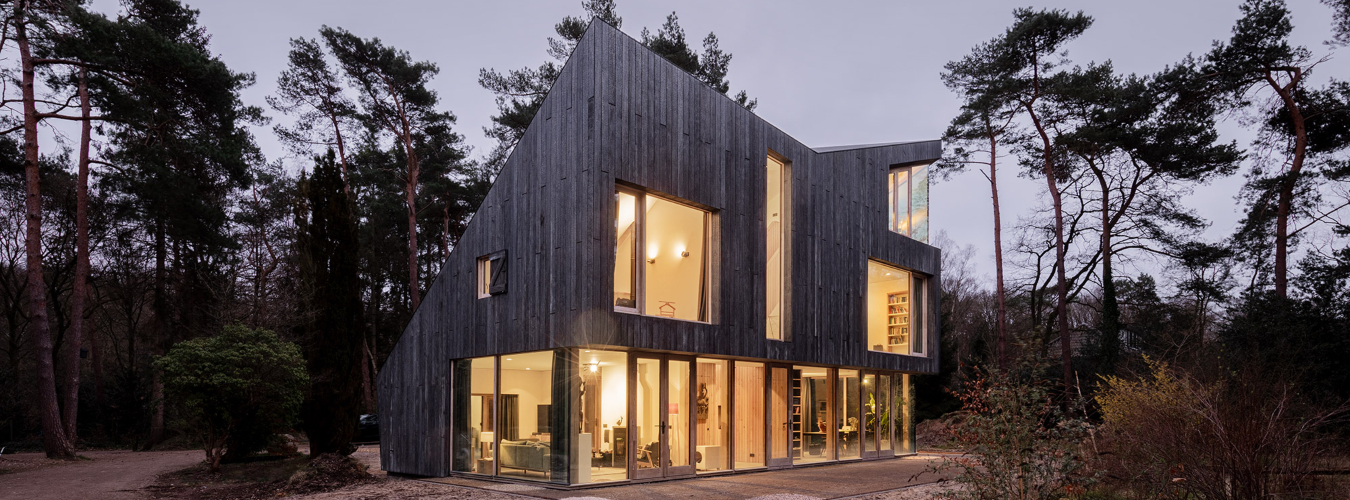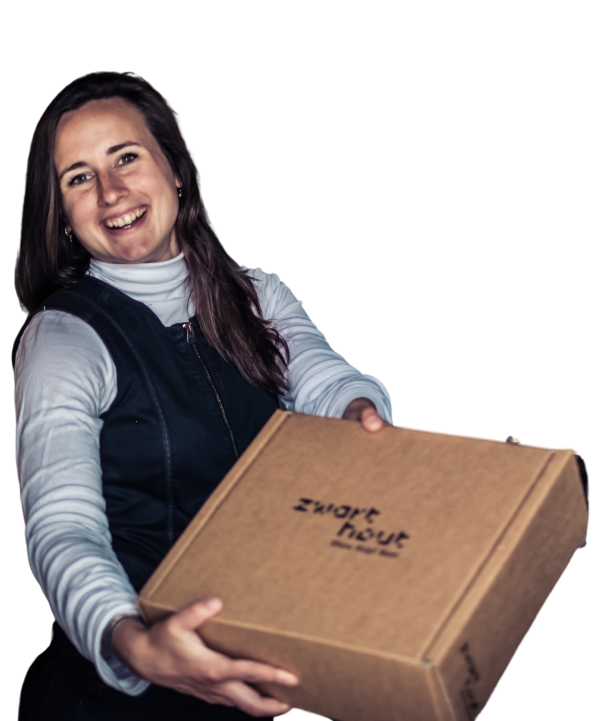The traditional Japanese Shou Sugi Ban technique, originally performed with Japanese cedar (Sugi), is renowned for its unique method of wood preservation. By carefully charring the wood, a natural carbon layer is created that protects against fungi, insects, weather, and even fire.
Japanese cedar is originally a softwood, straight-grained, and easy to work with. Despite its long history of use, this wood is not optimal for durable cladding. The resulting carbon layer is too soft and wears relatively quickly when the material is exposed to prolonged rain and wind. The same applies to larch, spruce, and pine, which are also too soft.
At Zwarthout | Shou Sugi Ban, we therefore deliberately choose other wood types, species that have been proven to develop a strong, hard, and lasting carbon layer capable of withstanding extreme weather for decades. This is essential for high-quality, durable, and low-maintenance facades.
Which Wood Types Are Suitable for Shou Sugi Ban?
For us, quality means using only wood that meets the highest standards in terms of lifespan, stability, durability, and aesthetics. We exclusively select wood species that:
- Form a strong and hard carbon layer;
- Are naturally durable or enhanced through modification;
- Remain dimensionally stable under changing weather conditions;
- Come from verifiably FSC®-certified sustainable forestry;
- Develop a UV-resistant carbon layer; black remains black without maintenance.
After extensive testing, we only select wood species that optimally respond to our unique charring technique. This results in facades with an exceptionally long lifespan and a consistently high-quality appearance.
1. Charred Accoya® (Marugame)
For our Marugame product, we use Accoya®, made from fast-growing Radiata Pine from sustainably managed forests. Accoya is globally recognized as one of the most durable wood products: it is structurally enhanced through acetylation, placing it in durability class 1.
Why Accoya is Suitable for Shou Sugi Ban:
- Extremely durable and dimensionally stable.
- High resistance to rot, fungi, insects, and extreme weather.
- Perfect base for a deep, hard carbon layer using our unique charring technique.
Our carefully controlled Shou Sugi Ban process creates an impressive “crocodile skin” pattern that remains stable for years, even under harsh weather conditions.
Advantages of Charred Accoya Marugame:
- Low-maintenance
- FSC®-certified
- Very high dimensional stability
- Cradle to Cradle® Gold
- Extensive quality certifications (KOMO, RAL, BBA, WDMA)
- Long lifespan with minimal environmental impact
- 50-year guarantee against rain, rot, and deformation
2. Charred Bamboo (Yoroi)
Our Yoroi product is made from thermally modified FSC® bamboo by MOSO® Bamboo X-treme. Bamboo is a rapidly renewable resource and an excellent ecological alternative to tropical hardwood.
Why Bamboo X-treme is Ideal for Shou Sugi Ban:
- Naturally fire-resistant: class B-s1-d0 (EN13501-1)
- High density, resulting in an exceptionally strong carbon layer
- Resistant to rot, fungi, insects, and extreme weather
- Minimal deformation due to high stability
The fire-resistant properties remain for the entire lifespan because they originate from the intrinsic material density, not from surface treatments or flame-retardant impregnation.
Sustainability Advantages of Charred MOSO® Bamboo:
- Highest durability class according to EU standards
- Extremely low CO₂ footprint, even negative over the entire lifecycle
- Suitable for BREEAM and LEED projects
- Infinitely renewable resource
- 25-year guarantee against rot and deformation
3. Charred Douglas (Naoshima, Shodoshima, Sakaide, Takamatsu)
Our Douglas comes from FSC®-certified Dutch forests. Douglas is naturally strong, relatively durable, and resin-rich, providing better protection against rot and fungi.
Untreated Douglas lasts approximately 10–15 years, but our Shou Sugi Ban technique at least doubles its lifespan, creating a durable protective carbon layer.
Why Douglas is Suitable for Shou Sugi Ban:
- Strong, stable softwood
- Resin in the heartwood contributes to natural protection
- Carbon layer enhances resistance to fungi, rot, and insects
- Characteristic knots provide a natural, lively appearance
Our variants range from fully charred (Naoshima) to beautifully brushed with visible grain structure (Shodoshima, Sakaide, Takamatsu), each with a unique visual effect.
4. Charred Thermo Radiata Pine (Nakatado & Kyushu)
For Nakatado and Kyushu, we use thermally modified Pinus Radiata from FSC®-certified forests in New Zealand. Heating the wood to 230°C upgrades it to durability class 1 (EN350).
Why Thermo Radiata Pine Responds Well to Shou Sugi Ban:
- Dimensionally stable and shape-retentive after modification
- Minimal shrinkage or swelling, ideal for facades
- Deep, strong carbon layer thanks to controlled charring
- Lightweight and easy to process
- Fully chemical-free process → environmentally friendly
Both variants are brushed and stained after charring, resulting in a unique texture with depth and character.
5. Charred Thermo Fraké (Omiyama)
Fraké, also known as Limba or African oak, is a beautiful hardwood from FSC®-certified West African forests. Thermal modification with steam and heat upgrades Fraké to durability class 1. The wood is preserved throughout, so operations like cutting or milling do not affect its lifespan.
Why Fraké is Suitable for Shou Sugi Ban:
- Almost no resin → no resin bleed during charring
- Strong, hard, and durable carbon layer
- High stability and dimensional accuracy
- Natural aesthetics enhanced by charring
- Robust, stylish appearance that does not gray
Fraké is therefore an aesthetically distinctive wood for premium, durable cladding. The hard black carbon layer of Omiyama develops a beautiful bronze glow in sunlight. The deeply charred layer has a natural look with an irregular structure and withstands weather conditions well, making Omiyama highly suitable for durable facade finishes.
Which Wood Types Are Not Suitable for Shou Sugi Ban?
Wood species such as larch, spruce, and pine are sometimes charred on the market, but at Zwarthout | Shou Sugi Ban, we deliberately avoid them.
These woods are:
- Too soft → carbon layer too thin and crumbles quickly
- Insufficiently durable → protection does not last
- Sensitive to rain and wind → carbon layer erodes quickly
Since Shou Sugi Ban is intended to preserve wood, using species with too soft or weak a base is simply not responsible for high-quality, long-lasting facades.
Conclusion:
The right wood type combined with the correct charring technique determines the lifespan of Shou Sugi Ban.
Advice from Our Shou Sugi Ban Specialists
If you want to know which Shou Sugi Ban product is best for your project and how to apply it optimally, feel free to contact us for a consultation.
